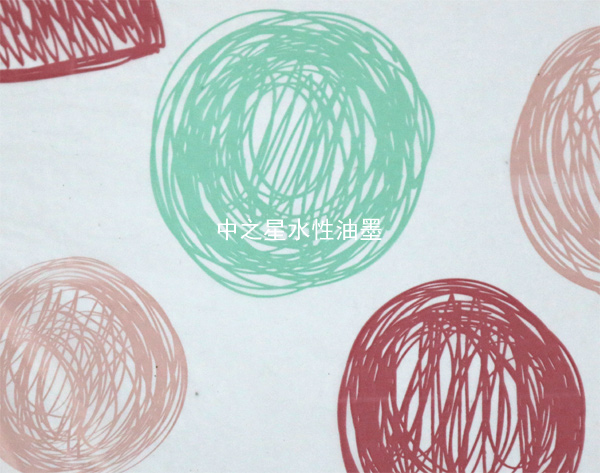In the field of water-based ink printing, ink cracking is a frequently encountered issue that significantly impacts the overall quality and aesthetic appeal of printed products. Cracking not only compromises the smoothness and glossiness of prints but also potentially reduces their abrasion resistance and water resistance, affecting product longevity and market competitiveness. To delve deeper into this phenomenon and seek effective solutions.
Causes and Case Analyses of Ink Cracking in Water-based Ink Printing
Ink Composition Issues Leading to Cracking
Case: A printing factory used newly purchased water-based ink for a batch of food packaging bag printing tasks. However, during the printing process, it was discovered that the ink exhibited noticeable cracking after drying. Upon analyzing the ink composition, it was found that the resin content was low, resulting in insufficient flexibility and adhesion, unable to form a uniform ink film on the substrate.
Analysis: Resin is a crucial component of water-based ink, playing a key role in enhancing ink adhesion and flexibility. Insufficient resin content or poor quality can lead to excessive shrinkage during the drying process, resulting in cracking. Therefore, printing factories should strictly control ink quality, ensuring reasonable ratios of critical components like resin.
Substrate Issues Causing Cracking
Case: A label printing enterprise encountered severe ink cracking problems when using water-based ink to print PVC labels. Upon inspecting the substrate, it was discovered that the surface tension of the PVC was too low, preventing the ink from adhering firmly.
Analysis: The surface characteristics of the printing substrate significantly impact ink adhesion. Low surface tension or the presence of impurities like oil or dust can lead to poor ink adhesion, resulting in cracking during the drying process. Therefore, it is essential to perform necessary surface treatments before printing, such as increasing surface tension or cleaning, to improve ink adhesion.

Improper Printing Process Parameters Resulting in Cracking
Case: A large printing company, in pursuit of higher production efficiency, set a faster printing speed and lowered the drying temperature while printing a batch of promotional booklets. This resulted in ink cracking on some of the booklets after drying.
Analysis: Printing process parameters like pressure, speed, and temperature directly impact ink drying and adhesion. Improper settings can lead to excessive internal stress or excessive shrinkage during drying, causing cracking. Therefore, printing companies should set printing process parameters based on the ink's performance characteristics and printing requirements, ensuring uniform and stable ink adhesion on the substrate.
Environmental Factors Leading to Cracking
Case: A printing factory located in a dry northern region frequently encountered ink cracking issues when using water-based ink for printing during winter. Upon analyzing environmental factors, it was found that low humidity was the primary cause of cracking.
Analysis: The humidity and temperature of the printing environment significantly impact the drying speed and adhesion properties of water-based ink. Low humidity can cause the ink to dry too quickly, resulting in excessive internal stress, while high temperatures can accelerate ink oxidation and aging, reducing flexibility and adhesion. Therefore, printing factories should closely monitor environmental changes and take appropriate measures to control factors like indoor humidity and temperature.
Preventive Measures and Recommendations
Based on the above cases and analyses, the following preventive measures can be taken to avoid ink cracking in water-based ink printing:
Strictly control ink quality, ensuring reasonable ratios and stable quality of components like resin and additives; regularly conduct quality inspections and analyses to identify and address issues promptly.
Select suitable substrates based on printing requirements and perform necessary surface treatments to improve adhesion; for substrates with low surface tension, methods like corona treatment or coating can be employed.
Set printing process parameters reasonably to avoid excessive internal stress or shrinkage; optimize settings based on ink performance and printing requirements.
Control the humidity and temperature of the printing environment to maintain stable drying conditions; adjust indoor humidity or temperature as needed to regulate drying speed.
Strengthen employee training and operational standardization, improving their proficiency in water-based ink printing techniques; regularly maintain and service equipment to ensure optimal performance.
Through the analysis and discussion of practical application cases, we have gained a deeper understanding of the causes of ink cracking in water-based ink printing and proposed targeted preventive measures and recommendations. In practical production, printing enterprises should focus on ink quality selection and control, substrate choice and treatment, process parameter optimization, and environmental condition control to ensure the quality and stability of printed products. Meanwhile, with the continuous advancement of technology and the emergence of new materials, we believe that more efficient, environmentally friendly, and stable water-based ink products will be developed in the future, injecting new vitality into the printing industry's development.